Why DVRT Isn’t Sandbag Training
2021-06-24

Dr. Till Sukkop, DVRT Germany Master Instructor (Check out Dr. Sukkop’s upcoming Germany DVRT Workshop HERE)
I think I get to brag that I am the oldest DVRT coach besides Josh and Jessica. It was over 13 years ago when I attended one of the very FIRST DVRT certifications that was offered. This program was actually first launched in Sweden of all places, so we got DVRT in Europe before any programs had hit the U.S., so I am happy I got in on the ground floor of what Josh and Jess were doing with DVRT and changing completely what people thought sandbag training was and what it could be.
Sandbag training is one of the oldest methods of physical performance improvement. However, it fell into oblivion until it was popularized again worldwide at the beginning of this century by Josh Henkin, the founder of the Dynamic Variable Resistance Training system. This wasn’t going to be just a new way of using sandbags though, it was going to help coaches see ow we can progress, train, cue, and help coaches and lifters alike solve so many training issues that most of us struggled with for years.
Dynamic Variable Resistance Training is aimed at all trainers, therapists, fitness and performance athletes who want to optimize their performance or that of their clients and patients. I’ve personally seen how effective the system and the tool can be when they are combined to really improve what we think about with functional fitness and what we can accomplish!
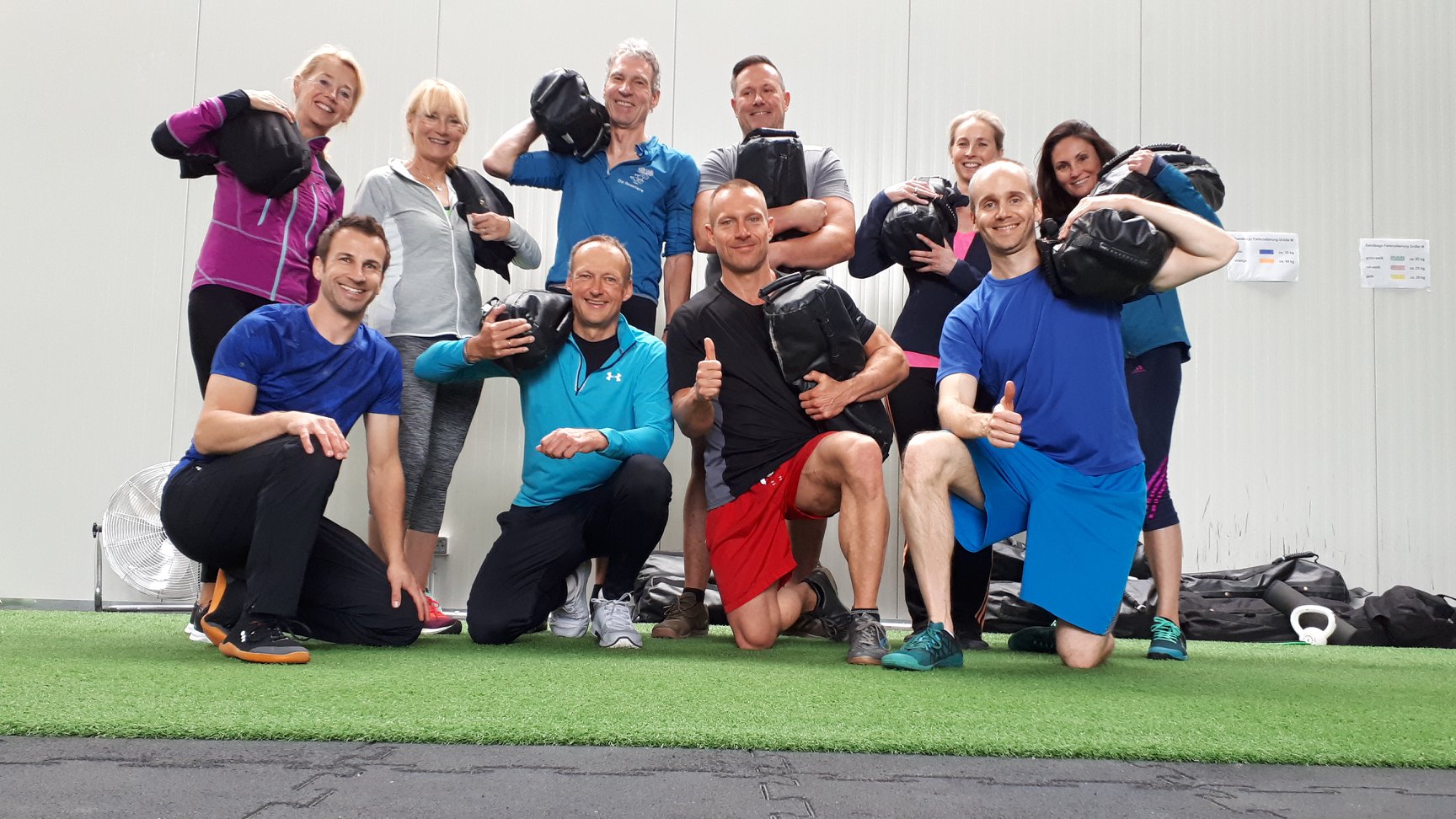
It does start with having the right tools. You have probably heard as I have from Josh and Jessica, “the tools DO matter”. They absolutely do and as someone who teaches a lot about kettlebells, bodyweight training, and much more here in Germany, I can tell you that the Ultimate Sandbag really matters in how we teach a lot about the solutions.
Most people recognize that the major benefit of “sandbag training” is that the weight is unstable and shifts. However, most don’t know WHY this matters and how we start to think about DVRT instead of just sandbag training. What does an unstable object like the Ultimate Sandbag provide?
-Increased stabilizer strength: We know that if the smaller muscles of the body aren’t working well, then the big muscles that we all love to train can’t produce the force that is possible. When the stabilizers are working well, then we can be stronger, we can move better, and we are more injury resilient.
-Higher metabolic training: If the goal is conditioning and/or fat lass, efficiency is the thing we are trying to avoid. For example, if we run the same mile day after day, our body becomes more efficient and we don’t have to work as hard (expend calories) to perform the same mile. The same often happens in strength training, tons of reps can only be done on exercises you can “groove” and while that is great if you are trying to improve just on that lift, it does decrease the metabolic effect of the movement. Since no two reps of the Ultimate Sandbag are the same, we get to teach how to move better, but also provide a huge conditioning effect.
-Train in unique angles/positions: Instability isn’t always just about the shifting of sand in DVRT. Because the Ultimate Sandbag is designed for a specific system of movements, we have shape/dimension that allows us to position the weight or move the weight in different positions and angles that really emphasize all 3 planes of motion. When we do so, we greatly improve our functional strength, mobility, stability, and improve our resiliency in far more ways. You start to see this isn’t just throwing a bag around or tossing it over your shoulder, that is sandbag training, this is DVRT!

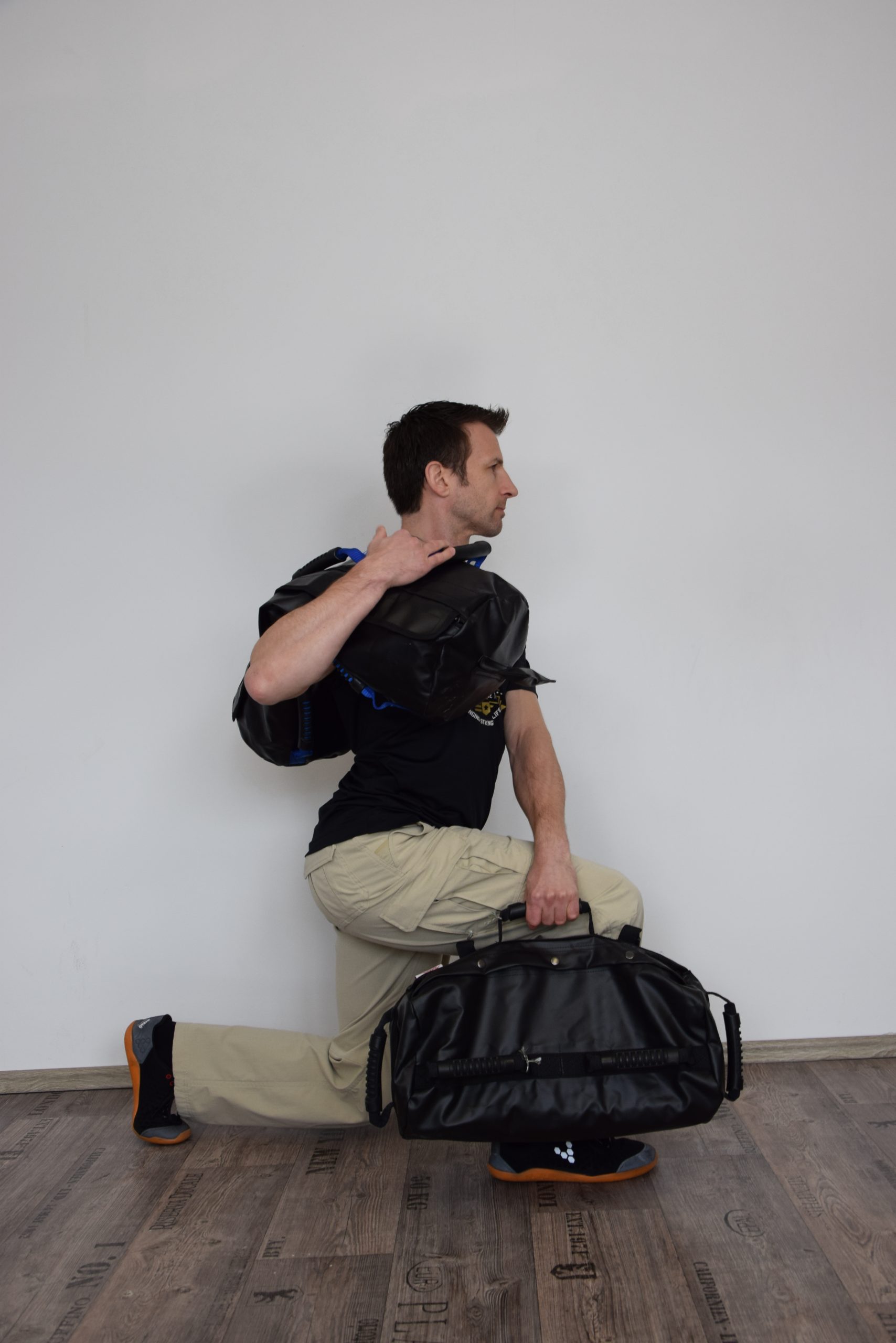
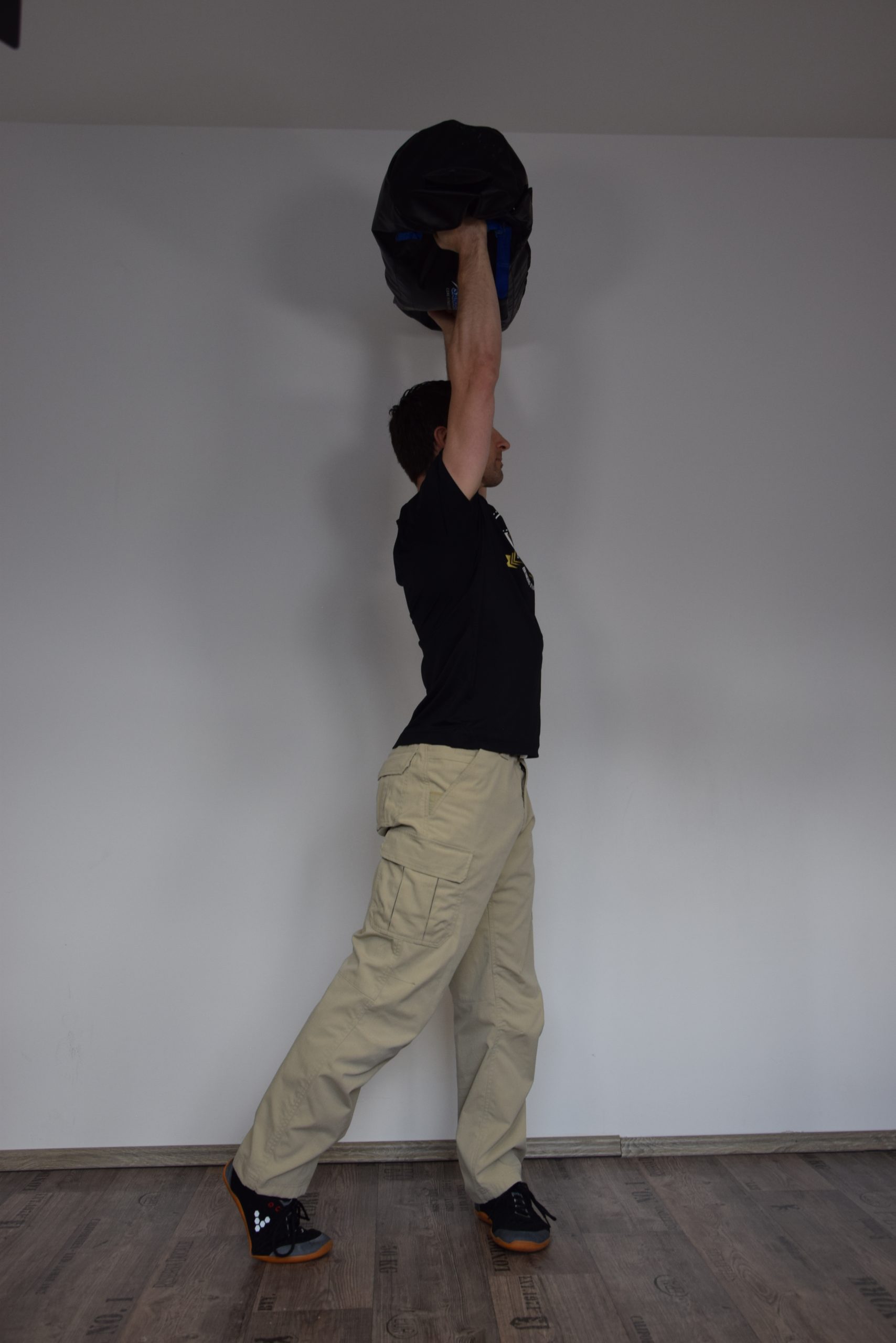
The above DVRT exercises show how we are going to forget about sandbag training and see a much bigger system of functional fitness. So, how do we do it?
Rotational Clean and Press
This full body exercise teaches more than just another way to clean and press. In life and sport our greatest power is often created in rotation. That is because our body uses what is known as the “serape effect” to use our natural design to produce this great strength and power. Basically our body is designed to work in diagonal patterns and rotation is an example of the way we are constructed.
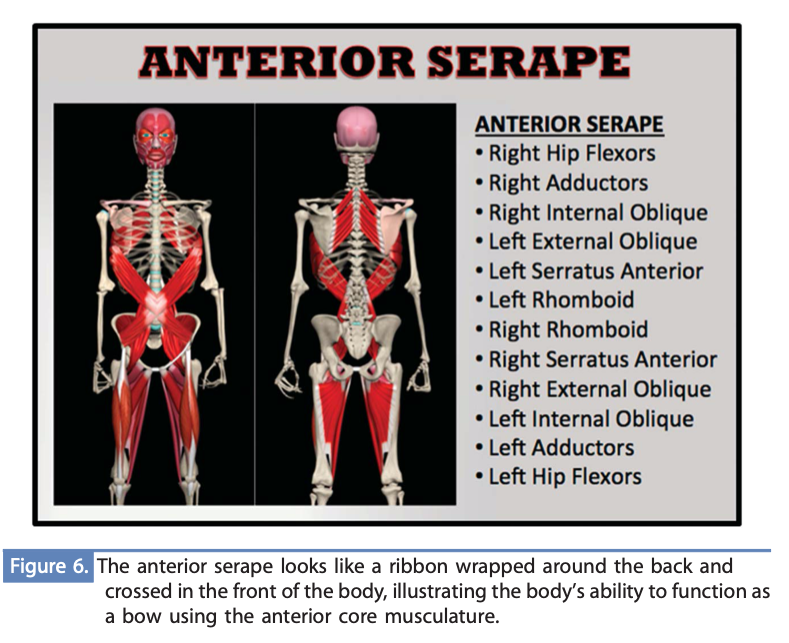
You can see we use A LOT of muscles, but we also build stability and mobility in such drills. Due to the instability of the Ultimate Sandbag, we really look to achieve not only great power, but high levels of movement accuracy. If your movement is off, then you won’t be able to perform the exercise.
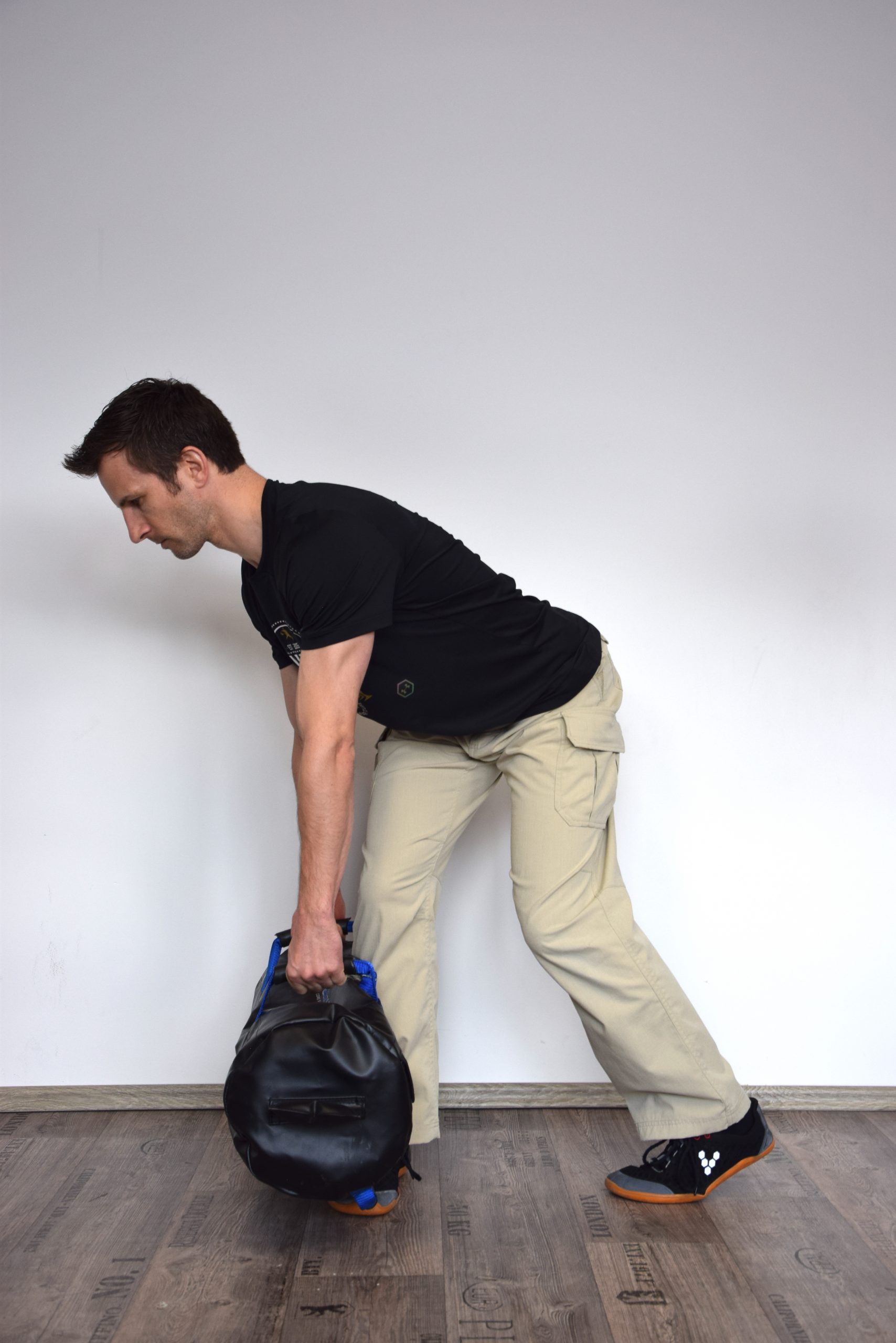


You can see it is all done through my hips and NOT my low back, plus look carefully at the footwork because it is all about the pivot!
If you speak German, please watch the whole video above. For my English speaking friends watch my movement.
Dead Bugs
I know you have seen a lot of dead bugs in DVRT and it isn’t an exercise most would think about if we were just discussing sandbag training. However, this is a great example of how the tool can solve such a big issue in an exercise. A lot of people struggle with such pelvic control drills and don’t know how to help clients understand to control their core correctly. The smaller Ultimate Sandbags give us a dimensional component that allows us to great the outside handles and actively pull the weight apart. What this does is instantly teach the core to “brace” and that is how we stabilize. From there we have so many progressions that make the dead bug so much better as you see me break down.

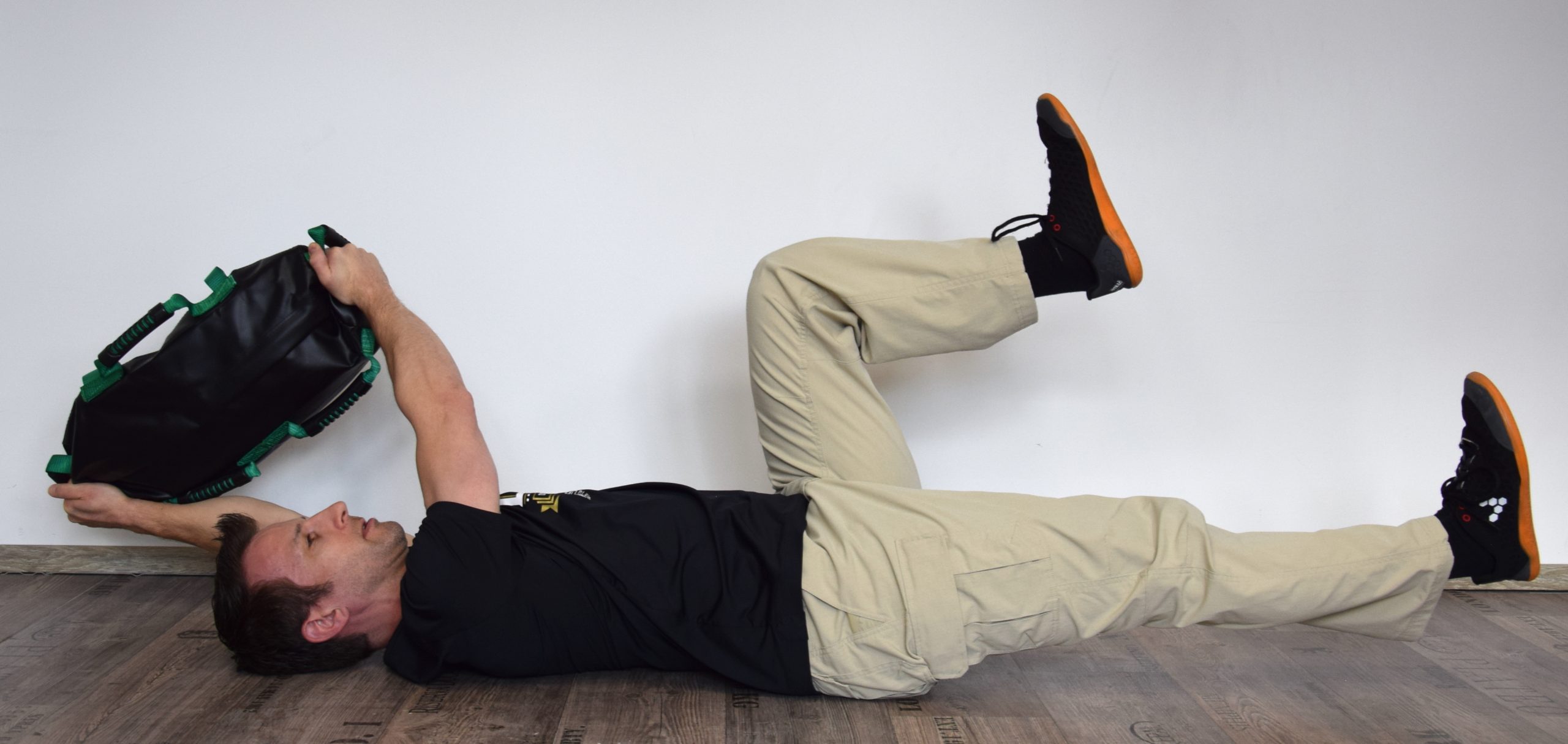
Notice how my arms stay locked because I am actively pulling the Ultimate Sandbag apart and the tension and the weight are giving my core such valuable feedback.
The Ability To Make Better Progressions
If you are new to DVRT it can seem like a very complicated system, however, it is actually very easy. We just tend to look at expanding the concepts of training to their highest levels. That means when we look at progressions we don’t just look at the weight, reps, etc. In DVRT we have the ability to change our load position, body position, and planes of motion that provides us better solutions to building that progression.
The basics are movements in the individual exercises, and there are two major concepts:
1.) Stability within a movement, which is changed by various holding positions, body positions, the aid itself, the speed of movement or the plane of movement, among other things.
2.) Progressive overloading of the body within a movement, which is altered by the extent of movement, speed, body position, holding position, weight, volume, or density of loading stimuli, among other factors.
The whole system is designed in a very structured way, so that the trainee can make steady progress in small steps. The weight itself is often one of the last variables to be changed to increase the exercise demand – quite the opposite of classic strength training.
The user learns how to transition almost fluidly from a stable exercise performance to a more unstable one. In this way, the training can correct weak points in the movement sequence step by step (e.g. immobile or unstable joints). For this reason, the DVRT™ is also ideally suited for providers of group training courses or personal trainers, among others, who do not always want to take large and heavy equipment with them to their clients.
Many exercises with free weights are performed in a stable parallel stance and especially in the sagittal plane, which runs through the body from front to back. The form and load oft he Ultimate Sandbag allows different stimuli in all movement planes.
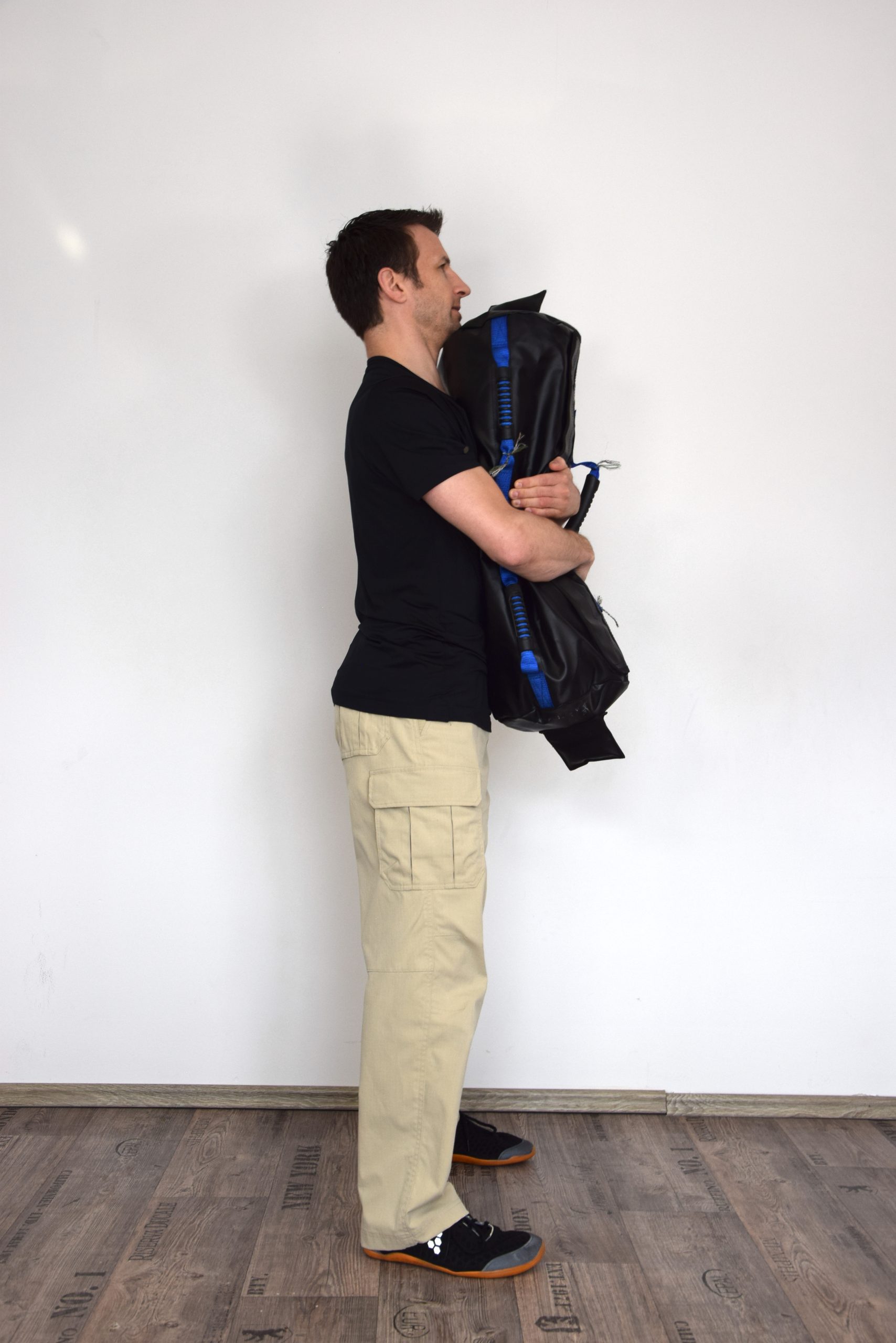

The Bear Hug Squat is a great example of a stable holding and body position to build the foundations of a well performed and strong squat. The dimension (using larger) of the Ultimate Sandbag and having more weight are keys in optimizing this movement. Knowing this helps us realize variables that sandbag training just never addresses.
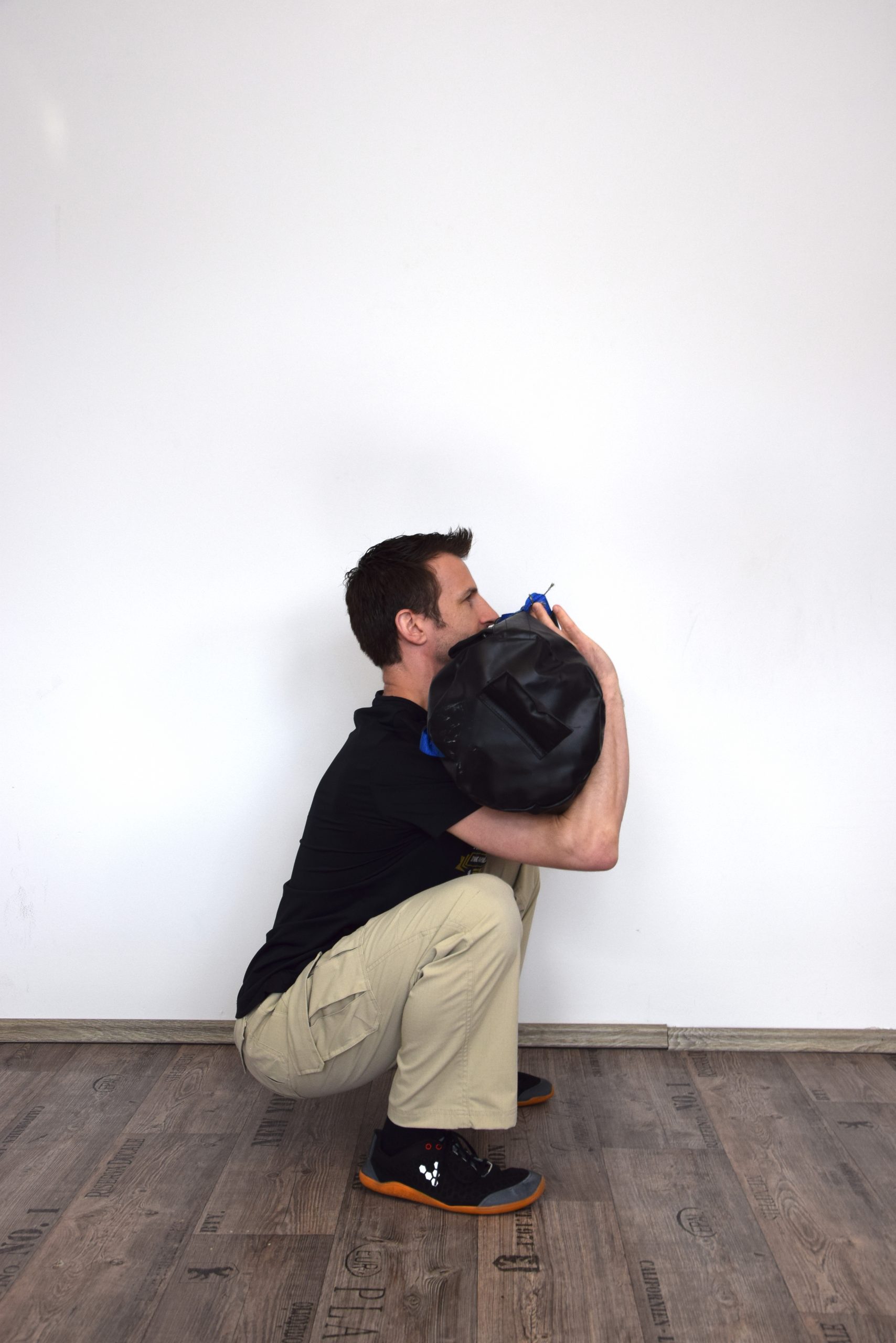
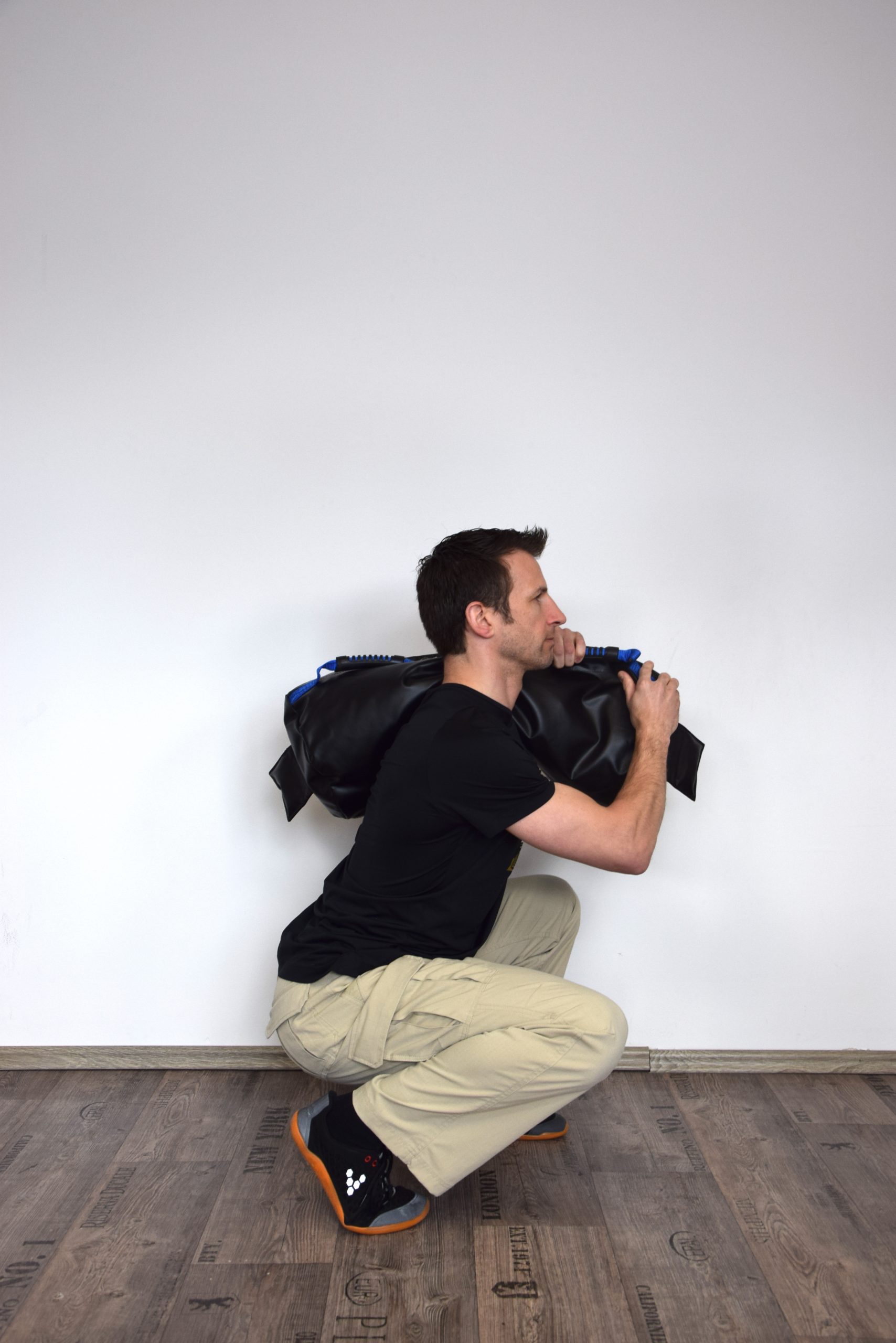
The Front Loaded squat (on the left) is a progression of the Bear Hug and that is our progression of holding position. The Shoulder Sprinter Squat is much higher level because are changing holding position and body position as the same time. We could use the same weighted Ultimate Sandbag in very different ways.
What is special about Dynamic Variable Resistance Training?
- Your body learns to move as a functional unit. Especially the muscle loops and fascia courses are included.
- You immediately get better training effects with many “known” exercises and better body control through small technique changes.
- You learn to move stably in all directions and all planes.
- You learn how to achieve better training results with less weight.
- The many fine levels of progression make it easy to adapt the training to the individual – from the rehabilitation athlete to the professional athlete.
- The principles of the system can be applied to a variety of training equipment.
- It is one of the best training systems for groups with different fitness levels.
- The training sessions often last only 20 to 30 minutes, improving strength, flexibility, endurance, speed and coordination.
- The workout has a high transferability to everyday and sports movements.
- The training can be very varied, is a lot of fun, provides very good effects in therapy, rehabilitation and performance improvement.
High stability in all planes of motion
In everyday life or in sports, we make many movements in a stepping position and in a one-legged stance. In addition, we move in all planes or in all directions. So life outside of training is in much more unstable positions and rarely static.
Even trainers like to quickly learn the “cool” looking rotational exercises of DVRT™, but often fail to execute them safely because they have not taken enough time for the important preparatory exercises. Therefore, basic stability in the body must first be established (especially in the area of the hip and shoulder joints and around the lumbar spine).

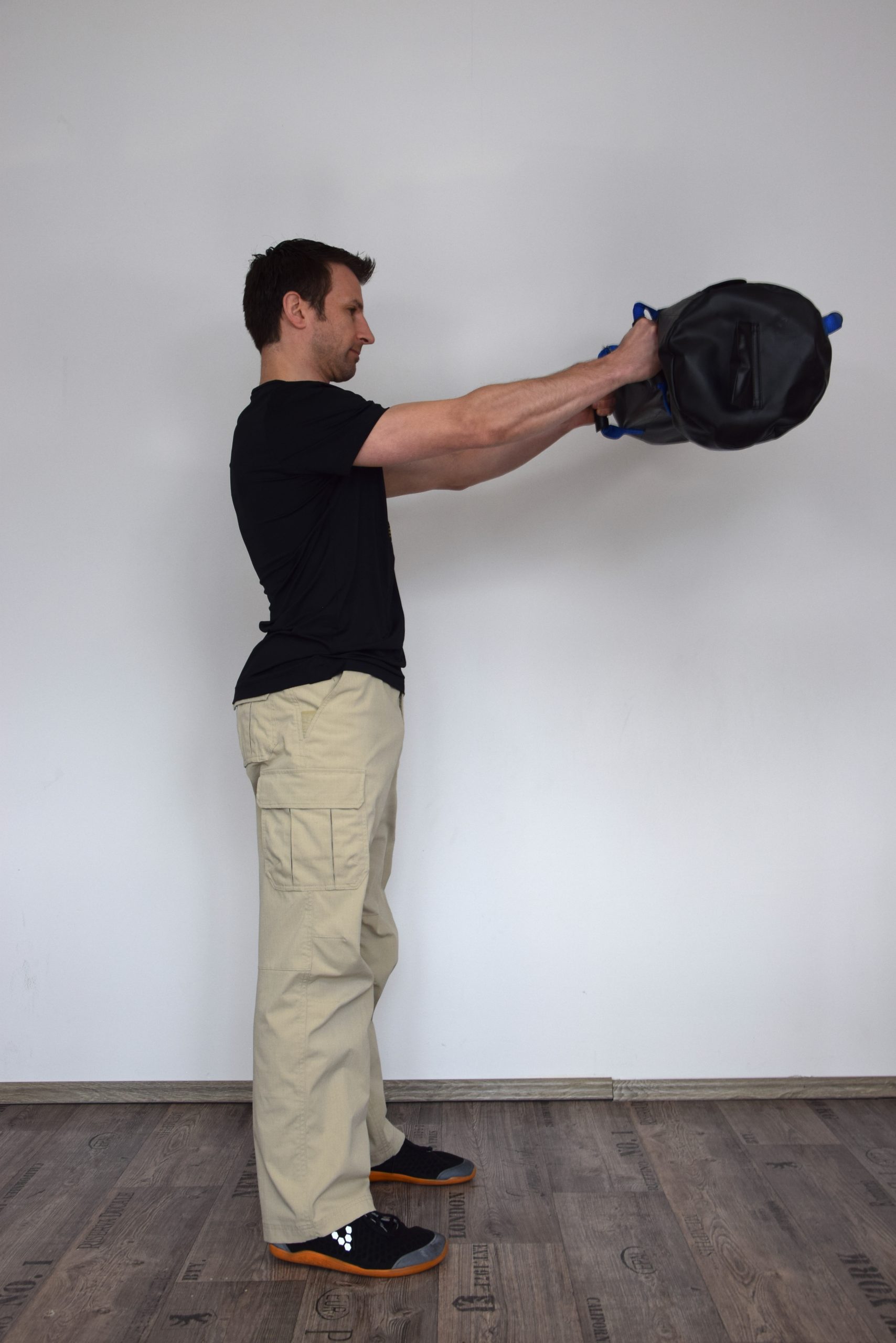

Shoveling is a great example of a high level power drill in DVRT that people need to understand the goals, performance, and progressions that led up to it. This is an awesome 3-D kettlebell swing!
Especially with regard to rotational stability and lateral stability of the body, many exercisers have major functional deficits, which is also a reason for many injuries that occur, among other things, during rapid changes of direction or deceleration movements.
The body must first learn to resist rotational forces (anti-rotation training) before it should actively generate rotational forces in training. That is where drills like our lateral plank drag are so important and what they teach the body allows us to progress to these higher level movements.


Probably one of the most misunderstood and incorrectly performed DVRT drills is our lateral plank drag.
The DVRT™ system starts intensively with the basics and slowly progresses to the more complex movements in a very structured way. In the process, the body develops very good stability in all areas of the body and planes of movement, which can be maintained even during complex movement patterns. The stability is generated by a reflexively higher recruitment of the stabilization muscles, and the body tension can also be actively increased with some methods. Along the way, strength, endurance and flexibility improve.


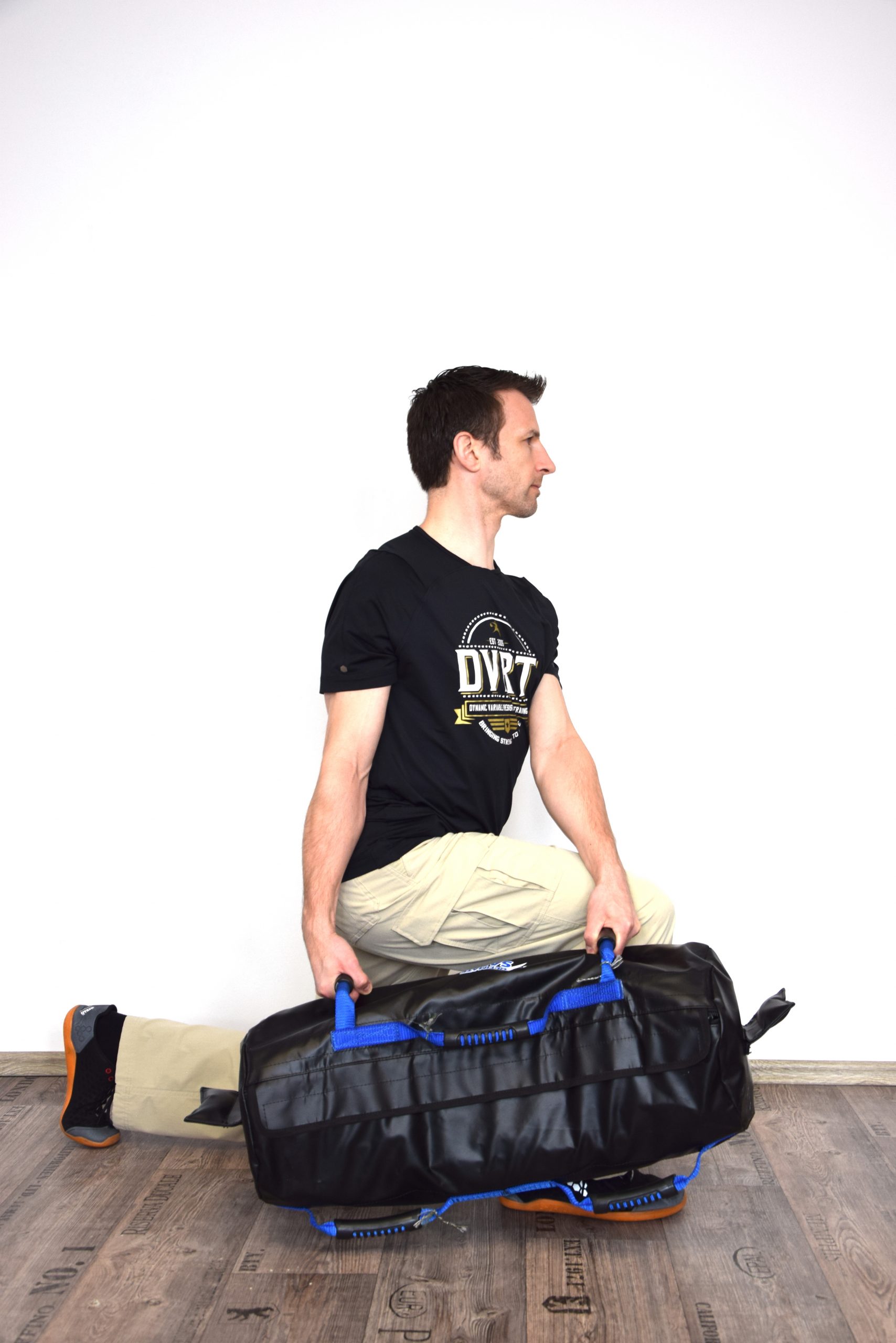
Just by altering the position of the Ultimate Sandbag as we lunge allows us to amplify both strength and stability at the same time. Something that isn’t really thought about if we just following “sandbag training”.
Detailed basic training, clearly structured structure and high versatility
As with training with kettlebells, for example, the body learns in this system in great detail how it must move in order to be able to perform the next exercise progression safely. Thus, nothing stands in the way of continuous training progress.
The DVRT™ focuses on thoroughly learning essential movement patterns before moving on to more complex movements.
The various holding and body positions alone allow for a variety of fine levels of progression without having to change the weight itself. This fine-tuning of the difficulty of all exercises allows for appropriate load stimuli to be applied to each client individually (even in a group setting). DVRT™ is a system built on clear principles that are not limited to exercises with the Ultimate Sandbag. It is only popular because of its versatility. All training principles can be transferred to other forms of training and equipment.
The goal is not to show new exercises, but how to choose the right exercise for you or your client. Ultimately, it’s all about the why behind each exercise. The why determines the exercise variation, methods and tools. Therefore, bodyweight exercises, elastic bands, sling trainers, barbells, kettlebells, ropes, medicine balls, climbing ropes, floor gliders and many more can be used or combined with the Ultimate Sandbag.
Conclusion
Ultimate Sandbags are one of the most versatile training tools available. Training with them is highly effective, very comprehensive and extremely varied. But only by adding the Dynamic Variable Resistance training behind them, the potential of this form of training can be fully exploited, which makes it even more effective.
| Workshops and Certifications in Germany:
Click here for DVRT™ workshops and certifications in Germany: https://tillsukopp.de/seminare |
| Click her for the official DVRT™ online workshop in German language: www.dvrt-online-workshop.de
|
© 2025 Ultimate Sandbag Training. Site by Jennifer Web Design.







